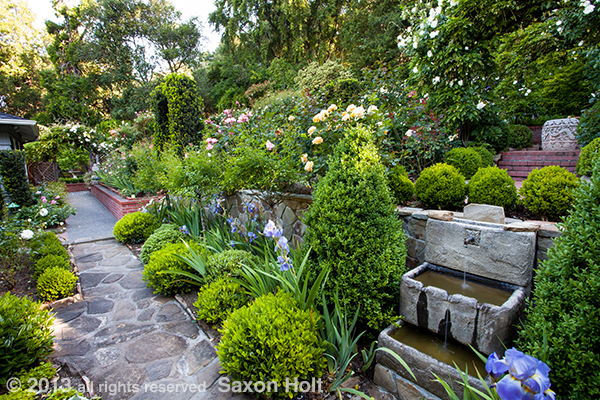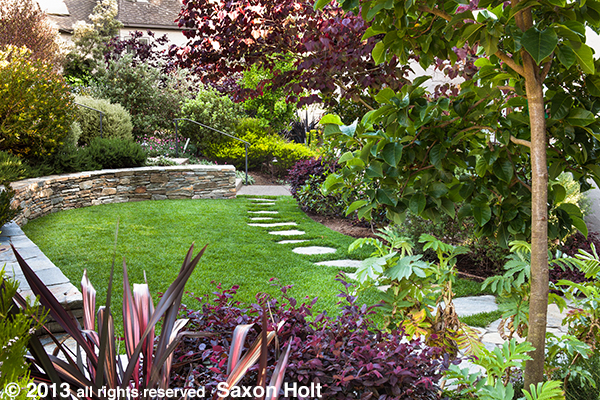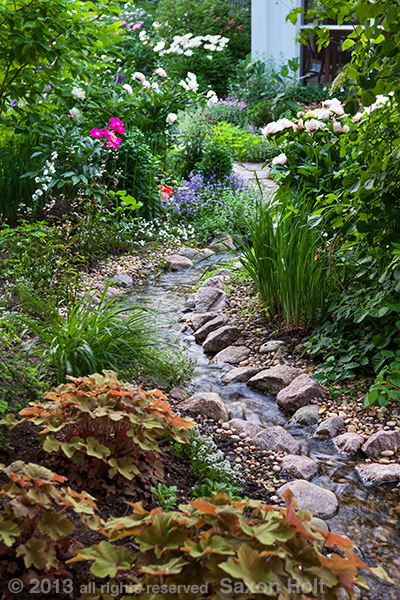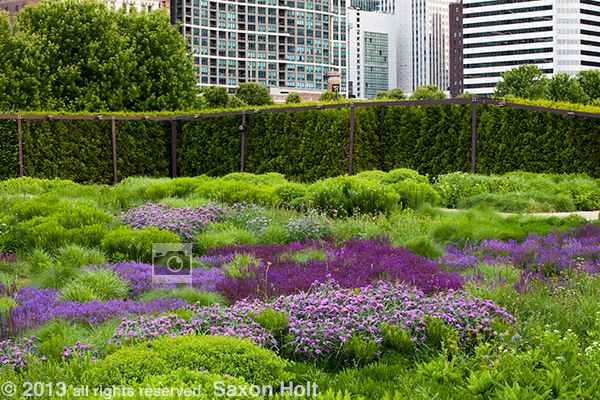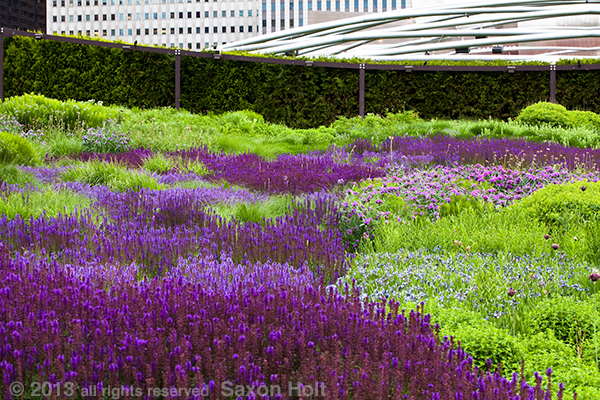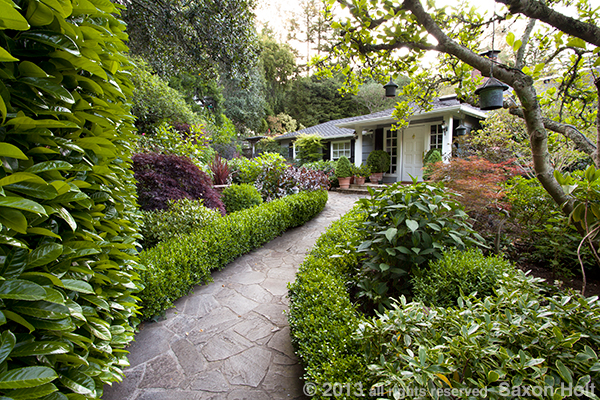 When trying to find a photo in a garden, a key concept is to look for leading lines. These are lines you, the photographer, find in a garden that can lead the viewer’s eye into the photo. These lines can frame your composition and lead to focal points as well, but fundamentally they must start at the bottom, out of the frame, and lead up into the composition.
When trying to find a photo in a garden, a key concept is to look for leading lines. These are lines you, the photographer, find in a garden that can lead the viewer’s eye into the photo. These lines can frame your composition and lead to focal points as well, but fundamentally they must start at the bottom, out of the frame, and lead up into the composition.
They can be fences, walls, streams, rows of plants, hedges, and especially pathways. Whenever you find a path in a garden you can use it to help compose a photo and guide your viewer to where you want. A pathway is designed to lead people, let it lead your photo too.
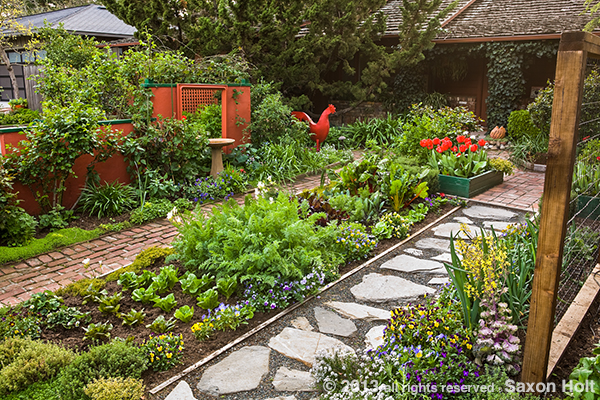
Note how the diagonal lines lead your across the vegetable bed and end where the designer, Rosalind Creasy, just ‘happened’ to place some bright red flowers.
Sometimes you will want the leading line to go completely across the frame, other times you will want it to stop, as in the photo above where the house becomes the stopping point, blocking the eye from wandering out of the frame. The photo is all about the vegetable bed so we want the eye to stay in the frame.
Other times a diagonal line may help draw the eye to the bottom of the photo as we see in the photo with the small trough fountain. The lines of the retaining wall parallel and reinforce the angle of the path.
Walls and fences also can be used as leading lines and in this next photo, I backed up just enough to allow the wall to both frame the left side and let its natural curve lead the eye through the frame.
I love it when I can find curving lines to work with. I nice technique for when you find a curving path is to get just outside of the curve and point your camera down with a wide lens. It will exaggerate the curve.
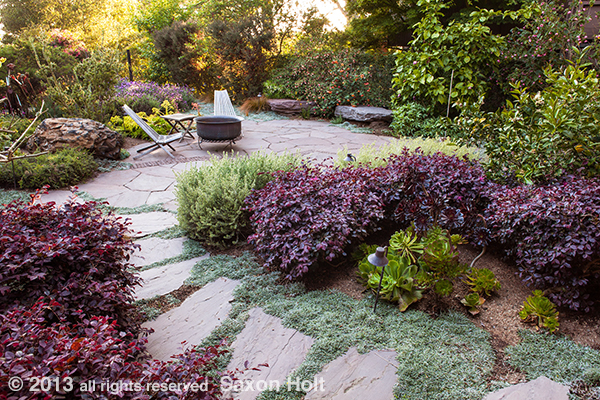
Note how the path leads both the visitor and the photographer’s eye into the garden and to the patio.
When you come across an interesting line of sight in a garden always go to the other end of the sight line and look back for a potential photo. If you have a strong leading line in one direction, it often offers another photo looking back.

Upon entering this garden, right away I knew the strong line of the path leading up the hill would create a strong photo.
And from the top of these stairs looking back:

The pathway not only continued up the hill, it curved around to the back of the house. What a fine leading line it made looking back down from where I came.
Leading lines in a vertical photo can really help create a strong graphic composition. When the garden presents you with strong lines, recognize the potential and work it. The lines don’t have to start as walls and paths, a stream in a garden offers great potential:
In some gardens there are no obvious leading lines, no paths, walls, or hardscape to help your composition. Look to the planting for inspiration. You may find shrub borders, a line of trees, a group of similar plants echoing each other and providing visual connections you can exploit as a photographer.
In this mass planting at the Lurie Garden in downtown Chicago the meadow provided swaths of color:
See my little camera icon in the photo? Going to that spot, getting low, and looking across the purple meadow sage for an interesting point of view (remember our last lesson on point of view?) creates an leading line:
All the above examples deal with landscape views, wide shots of gardens. But there are plenty of times when we are simply fascinated by a single plant. There will be an entire chapter on macro photography later in the book and I will talk about all the composition tools then, but for now I will leave you with a palm tree photo where the leaf structure and stems provide an explosion of lines.
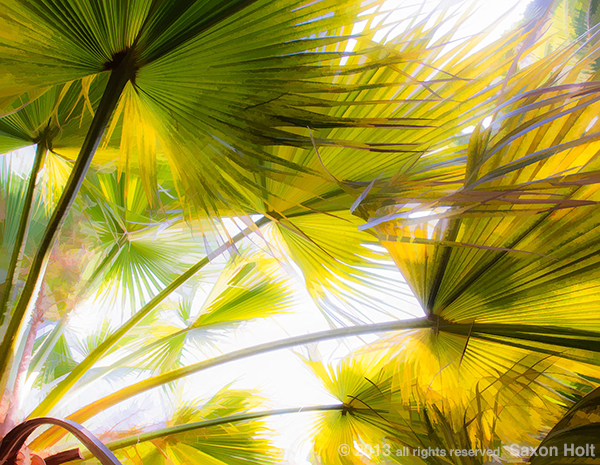
Never got a 2013 wall calendar ? This is the cover of my Light in the Garden Calendar:
More examples in the Photobotanic Garden Photography Workshop…. Coming soon …..

